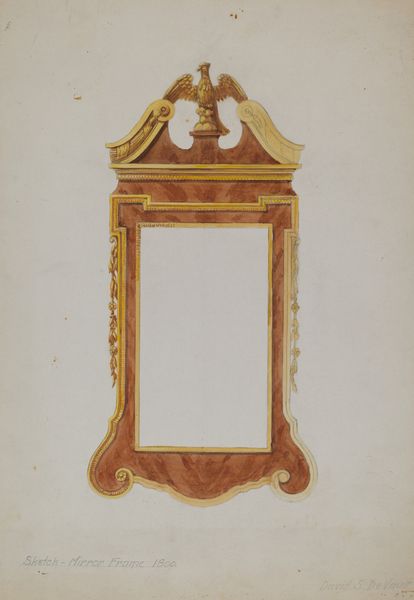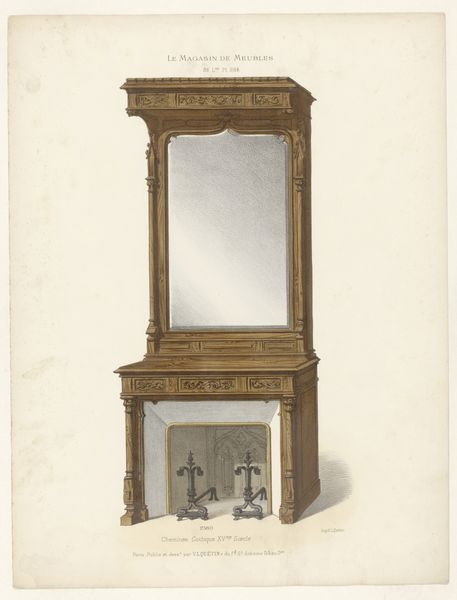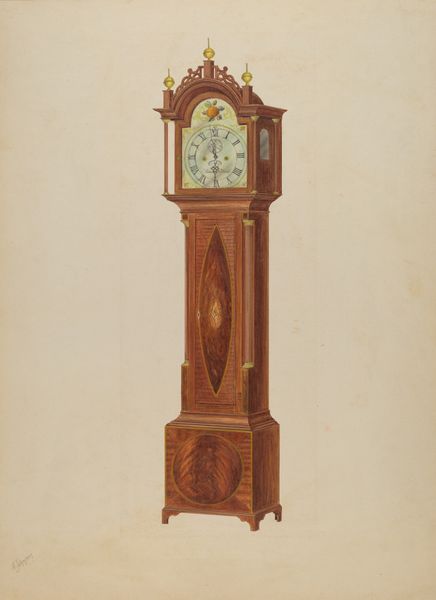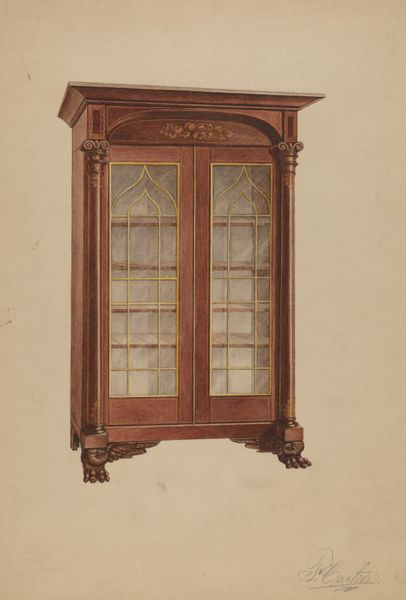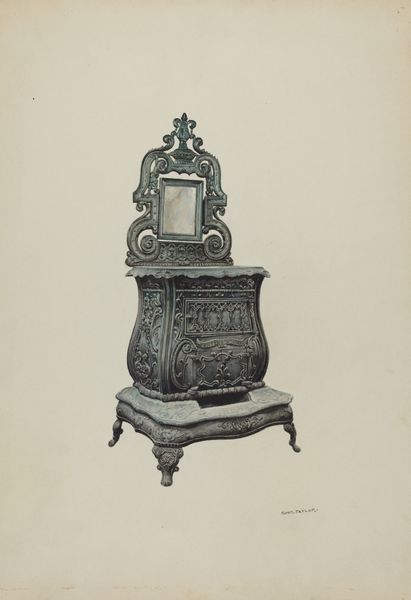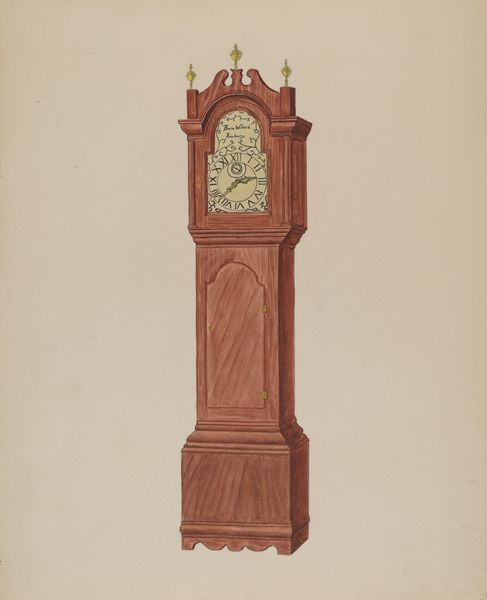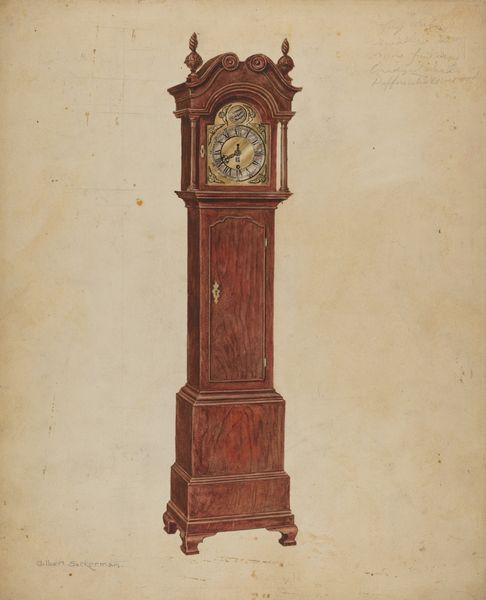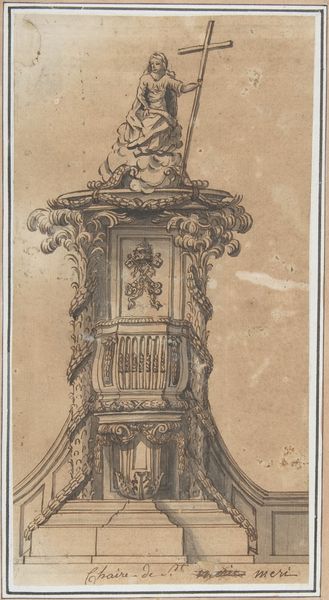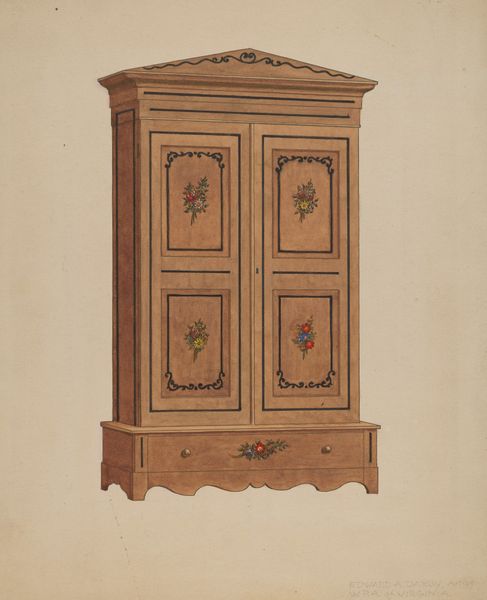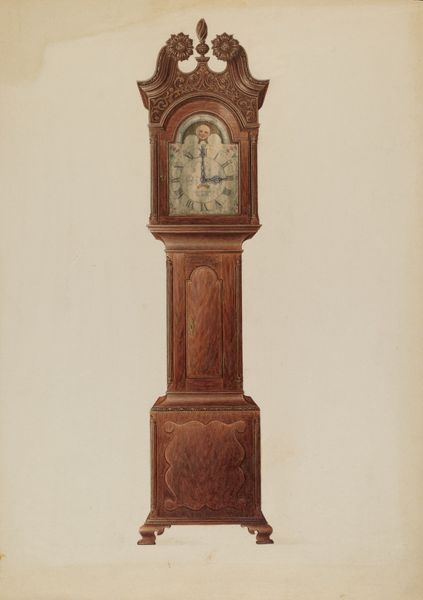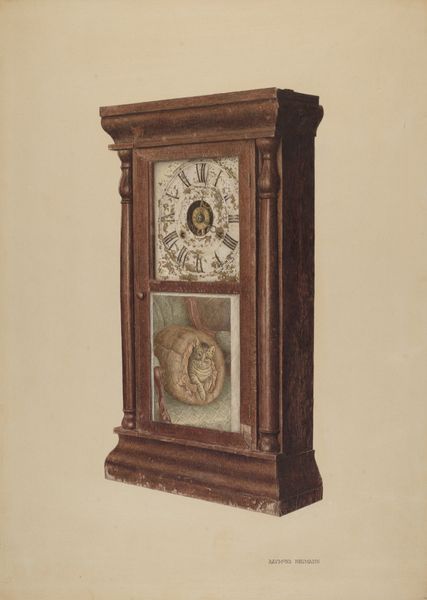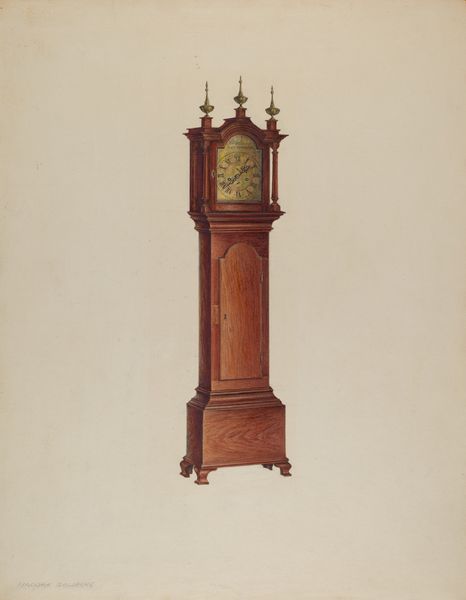
drawing, coloured-pencil, acrylic-paint, watercolor
#
drawing
#
coloured-pencil
#
water colours
#
acrylic-paint
#
watercolor
#
coloured pencil
#
watercolor
Dimensions: overall: 35.6 x 27.9 cm (14 x 11 in.) Original IAD Object: 6 1/2"square; 13"high
Copyright: National Gallery of Art: CC0 1.0
Curator: Verna Tallman’s "Monstrance," dating from around 1937, presents a compelling study of religious iconography rendered through colored pencil and watercolor. It's quite striking. Editor: The rendering indeed arrests the eye. Despite the overt religious subject matter, the subdued colors and slightly crude execution give the work a wonderfully folk-art, almost naive feeling. What is your sense of Tallman's approach to such a traditional form? Curator: Well, this work raises a number of questions about the intersection of faith, art, and social context during that period. Given the era, and likely commissioned in the context of the Works Progress Administration’s Federal Art Project, Tallman's work suggests a re-evaluation of sacred objects within a broader social landscape. Perhaps an attempt to democratize religious iconography. Editor: I think you are right on the democratic impulses, however the symbolism in this work speaks to more than democratization. The architectural construction of the box, and the stylized lily motifs recall centuries of sacred presentation and reverence. The mirroring within the window asks what are we showing to God and each other? The colors might be more demure, but the sacred vessel has serious staying power, a quiet, interior form of devotion that exists to this day. Curator: I agree, but the materials matter here as well. Choosing relatively humble mediums such as colored pencil and watercolor situates it far from, say, the opulent gold leafing often associated with monstrances. This reflects not just material constraints perhaps but a deliberate choice to downplay grandeur. In the context of the WPA, it’s an interesting divergence from, or perhaps adaptation of, traditional religious art. Editor: It does make me consider how accessible Tallman made this piece of religious iconography to her audience through her chosen techniques. We know now how easily artists could make multiple versions of an original using offset prints. Do you see how this Monstrance in watercolor might act as a model for devotional reproduction? Curator: That is certainly possible! It is tempting to see in this work an argument about the accessibility of faith, represented both through form and, in a very practical sense, potential distribution. It opens up exciting lines of enquiry. Editor: Indeed. Looking closer reveals hidden dimensions, which shows the richness of everyday materials.
Comments
No comments
Be the first to comment and join the conversation on the ultimate creative platform.
